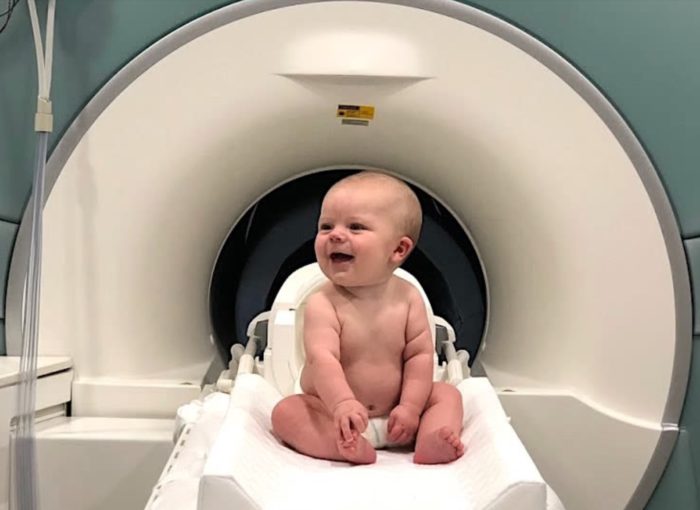Mar 03 2020
The Brains of Newborns
 Most regular readers of this blog should know by now that the answer to nature vs nurture is – yes. Both are involved in neural development and function, and interact in a complex way. Further, while I still find myself reverting to it on occasion, the metaphors of hardware and software don’t quite work with the brain. Rather, the brain is wetware, which is a dynamic combination of both. A new study, looking at the visual cortex of young newborns, adds more information to this basic understanding.
Most regular readers of this blog should know by now that the answer to nature vs nurture is – yes. Both are involved in neural development and function, and interact in a complex way. Further, while I still find myself reverting to it on occasion, the metaphors of hardware and software don’t quite work with the brain. Rather, the brain is wetware, which is a dynamic combination of both. A new study, looking at the visual cortex of young newborns, adds more information to this basic understanding.
Generally what people are trying to refer to with the term “hardwired” are patterns in the human brain determined largely by genetics, rather than any environmental input. But the fundamental misunderstanding that comes along as baggage with that metaphor is the notion that genes carry a blueprint of the brain – they don’t. They encode rules for how to develop a brain, and those rules include environmental input. So you cannot disentangle the two. Even newborns developed in an environment – the environment of the womb, with the brain also receiving feedback from the body of the fetus itself.
Newborns do come out of the womb with some behaviors, albeit a limited basic repertoire. They need to sleep, feed, and interact. They have limited movement, hearing, and vision, and a similarly limited range of emotions and mental states. But perhaps their biggest behavioral ability is learning – they are sponges that absorb information from their environment. The question is – how much of their trajectory from this infantile state to an adult state is determined by the pathways that are already laid out in their brains, and how much is determined by their environment? Both clearly have a dramatic effect, and interact with each other.
The purpose of the current study was to investigate what the visual cortex of newborns is like, and how they compare to adults. Vision is a pretty basic function, and we would expect the brain to be primed for it. We also know that deprived of visual stimulation, this part of the brain will fail to develop, or will be coopted for other uses. Using fMRI the researchers found that the basic adult structure of the visual cortex of infants was already present. We knew from prior research that there are two brain regions that talk to each other and are involved in facial recognition. Similarly, there are two brain regions that are wired together and function to visualize places. In infants (average age 27 days), the two face regions were active and synchronized together, while the two place regions were also active and synchronized together. This pattern was identical to that of adult brains – although not as robust.
What does this tell us? First, that a baby’s brain comes out of the womb ready for vision, with a propensity for seeing faces and places. However, this pattern of visual processing still has some development to do. This is potentially good news. It opens the door to interventions to help infants with conditions that are marked by decreased connections in this part of the brain to develop further.
This is not surprising. We know infants and young children have a great deal of plasticity, meaning that the patterns of connections and therefore functions of the brain are still actively developing and can be affected by environmental interventions. This is why early interventions are so important. What this study also offers in a potential method for early diagnosis of certain problem, and therefore earlier intervention. In essence, people can learn through practice how to overcome or at least compensate for a neurological deficiency. If you lack musical ability, you can still learn to become musically competent, but may never become a master.
Ideally newborns could be routinely scanned for their pattern of neurological function. If specific deficiencies are detected, early interventions can be prescribed to maximally compensate. Often such problems are difficult to diagnose clinically before about 6 months of age, when infant behavior becomes complex enough to start noticing developmental problems, such as missing milestones. But that’s six months of brain development that perhaps should not be lost to possible interventions. Designing and testing those interventions, of course, is another issue.
We are not born blank slates. Our brains are primed for certain talents, behaviors, proclivities, tendencies, and abilities. But that potential continues to develop with a large influence from the environment. We get good at what we do, we absorb the culture that surrounds us, we mimic the behavior of others, and we respond to our emotional environment. The better we can understand how the brain develops, and to identify particular areas of challenge for individuals, the better we will be able to optimize the development of function of human brains – which is arguably our most important resource.






